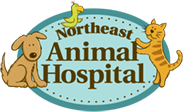Helping Our Pets Adjust When We Return to Work

ON THIS PAGE:
- How do I prepare my pet for my absence?
- What if I have short notice for going back to work?
- What are the signs of a stressed pet?
- What can I do to help relieve my pet’s anxiety?
- What if these suggestions don't work?
- A sweet reunion! Enjoy your time together
As pet owners begin to return to work, we can’t expect our pets to understand that it’s back to business as usual. If you adopted a dog during the pandemic, and are wondering whether you will keep or “rehome” your new pet, please read our post with tips to help you through the decision.
Lots of online jokes say that our dogs are going to miss us but our cats can’t wait to have the house to themselves again! While there are cats that will certainly miss our constant company, this blog is mainly directed toward dog owners. That being said, there are still many practical tips that cat owners can adapt for their pets.
Sheltering in place for us probably meant a significant reduction in our interaction with other people. But for our pets, all of that lost socialization on our part wasn’t lost on them. They no doubt relished all the time and attention they received due to our being home more.
But now, many of us have the advantage of having gotten advanced notice of returning to work, which will allow us to help our pets adjust to being home alone again. This gives us a few days—or longer—to wean our pets away from us and help ease them back into a routine that more closely resembles “real” life.
How do I prepare my pet for my absence?
Start by leaving the house more frequently, increasing the duration each time. Do so even if we’re going places we would normally bring our dog, like to the park, to the home improvement store, to get coffee, or to eat out on a restaurant’s patio. This will help your pet get used to the idea of you being away, and that you always come back.
Don’t underestimate your pet’s ability to learn and recognize details in your daily routine. If you normally wear certain clothes for work, carry a particular bag, or give them a special treat before we leave, begin these “rituals” again as we leave for our excursions.
Our pets’ walks or mealtimes may have been shifted because we were home more. Maybe we slept longer, went on more walks to get out of the house, or maybe we ate dinner later due to quarantine-snacking during the day. Reinstitute your pet’s old walking and meal times. Resist the urge to feed them, take them on a walk, or take them outside to play during hours you will normally be at work.
If your dog normally spent their time in a crate or behind a pet gate while you were away at work, you may want to consider having them take their naps there again, to get used to their not being by your side all day.
If your dog’s routine included naps in a crate or behind a pet gate while you were away, consider having them take their naps there again. This will help wean them off from your constant company.
What if I have short notice for going back to work?
“I just found out I have to go back to work tomorrow! Now what?” Not all of us will have advance notice before returning to work, and our absence may come as a sudden shock to our pets. If that happens, don’t assume that your pet will be scarred for life. Our pets have amazing resiliency and can still be helped through this new adjustment.
The fact is, whether you have no time to prepare, or two weeks, a significant change to your pet’s schedule still comes with some degree of anxiety for them. New pets—whether they be puppies, kittens, or a rescue with a history of separation anxiety—may have the most difficult time with this. Knowing what to look for can help you be proactive and set your pet up for success.
Our absence may come as a sudden shock to our pets, whether you have no time to prepare or two weeks. A sudden change to your pet’s schedule can still induce a measure of anxiety in them.
What are the signs of a stressed pet?
As stated above, our pets are fully capable of learning our routines and can anticipate what comes next. Tying up our shoelaces and grabbing a bottle of water can easily elicit excited spins and runs back and forth between us and the door as your dog knows it’s time for a walk. Similarly, packing our lunch, putting on a uniform, or taking the extra time to shave or put on makeup can induce whining, whimpering, panting, or pacing. Or our pet may appear depressed, lying at our feet.
These can be classic signs of anxiety and stress. We may hear them start to bark as we’re closing the door, hear them jumping against the closed door, or see them immediately pawing at the window or agitating the blinds. Besides tugging at our heartstrings, a pet that can’t self-soothe—or that has too much energy—can manifest a little destructive behavior.
We might hear our dog jumping against the door when we leave, or see them immediately up in the window wanting to bust through. Unfortunately, pets that can’t calm themselves or that have too much energy may become destructive.
Chewing and destroying blinds, doorframes, windowsills, furniture, or your personal belongings aren’t done out of spite, though it can sometimes feel that way. Neither is soiling in the house. These are all physical manifestations of the mental stress—or maybe just plain boredom—they feel.
What can I do to help relieve my pet’s anxiety?
We stand by the adage, “a tired dog is a happy dog.” Helping your dog release pent-up energy is a great way to help ease their mental stress, and make them too tired to be destructive! Before work, take them on a long walk or jog, or play fetch in the backyard.
A long walk, jog, or game of fetch before you go to work can help your pets release pent-up energy that could otherwise turn destructive when you leave.
Leaving them with interactive puzzle toys, or a new and exciting chew toy can encourage independence while keeping them busy. Be careful not to leave them with a chew toy that can break into small pieces and become a choking hazard or digestive system obstruction. If leaving your pet out to freely roam the house isn’t working, consider confining them to a crate. Far from being a prison, a crate provides a “den” for your dog, creating a safe and secure environment.
Another option is to create a new space in your home for your dog to enjoy. According to Porch.com, “One way you can make your pet’s life better is by providing them with a cozy, convenient pet nook. This designated space will give your animal companion their little part of the home where they can sleep, eat, and feel comfortable.” Read their tips on How to Design the Perfect Pet Nook for Your Furry Friend.
Regardless of whether your pet is free-range or hunkered down in a bunker, if you live in an apartment or condo, or even if your neighbor’s home is close to yours, inform your neighbor that you’re returning to work. Ask them to let you know if your pet is being excessively vocal. This may go a long way in, not only maintaining a good neighborly relationship but also can let you gauge if your pet is having trouble adjusting.
What if these suggestions don’t work?
“I’ve tried these suggestions and my pet is still stressed! What can I do?” Many times, a high-energy dog can benefit from having a dog walker visit during the day or can benefit from doggy daycare. Daycare allows your dog to socialize and interact with other dogs, providing mental and physical activities that will leave your dog happy and tired—while giving you peace of mind.
Doggy daycare allows your dog to socialize and interact with other dogs and provides mental and physical activities that will leave your dog happy and tired, all while giving you peace of mind.
If despite your best efforts, your dog just isn’t adjusting to being home alone again (or maybe you have a new rescue that isn’t handling it well at all), and you feel like you could benefit from behavioral assistance, dog training may be a consideration. Not only can it help boost a dog’s confidence, but a trainer can help you work with your dog on counter-conditioning their anxiety response to being left alone, teaching them to at least tolerate it, even if it may never be something they’ll enjoy.
Sometimes, our veterinarians can help with prescription medication if needed, but occasionally, a veterinary behaviorist is needed. Contact us and we’ll be happy to give you a recommendation.
Chewing and destroying things isn’t done out of spite, although it can sometimes feel that way!
A sweet reunion! Enjoy your time together
The first week you return to work is bound to be the toughest, but as you and your dog’s “new” routine becomes an old habit again, you both will feel more comfortable with the changes. That reunion at the end of the workday becomes all the sweeter as the anticipation of seeing each other again grows!
Make the most of your time together and help your dog release some of the pent-up energy from the day by exploring new parks and streets in your neighborhood, and even helping to support local businesses as they open back up. New sights, sounds, and smells will provide your dog with mental stimulation, and a mentally engaged brain will be content and ready for quiet snuggles at the end of the day.
Grabbing coffee together downtown, picking up curbside takeout at your favorite restaurant, dining outside on a restaurant’s patio, enjoying a beer at a brewery, and sampling the offerings of a local food truck, are all great ways to help out our beautiful city, local business owners, and employees while still social distancing and staying safe.
Northeast Animal Hospital and Downtown St. Pete Vet Clinic are sister practices located in sunny St. Petersburg, Florida. We are devoted to helping pet owners connect with their pets while educating them on topics that will help keep their pets happy and healthy. If you are local to St. Pete and its surrounding areas and have any questions, please don’t hesitate to contact us. If you’ve found us through a web search, we hope we’ve helped answer your question on this subject. If you reside beyond the Tampa Bay area we recommend you contact your local veterinarian for any further needed assistance.
